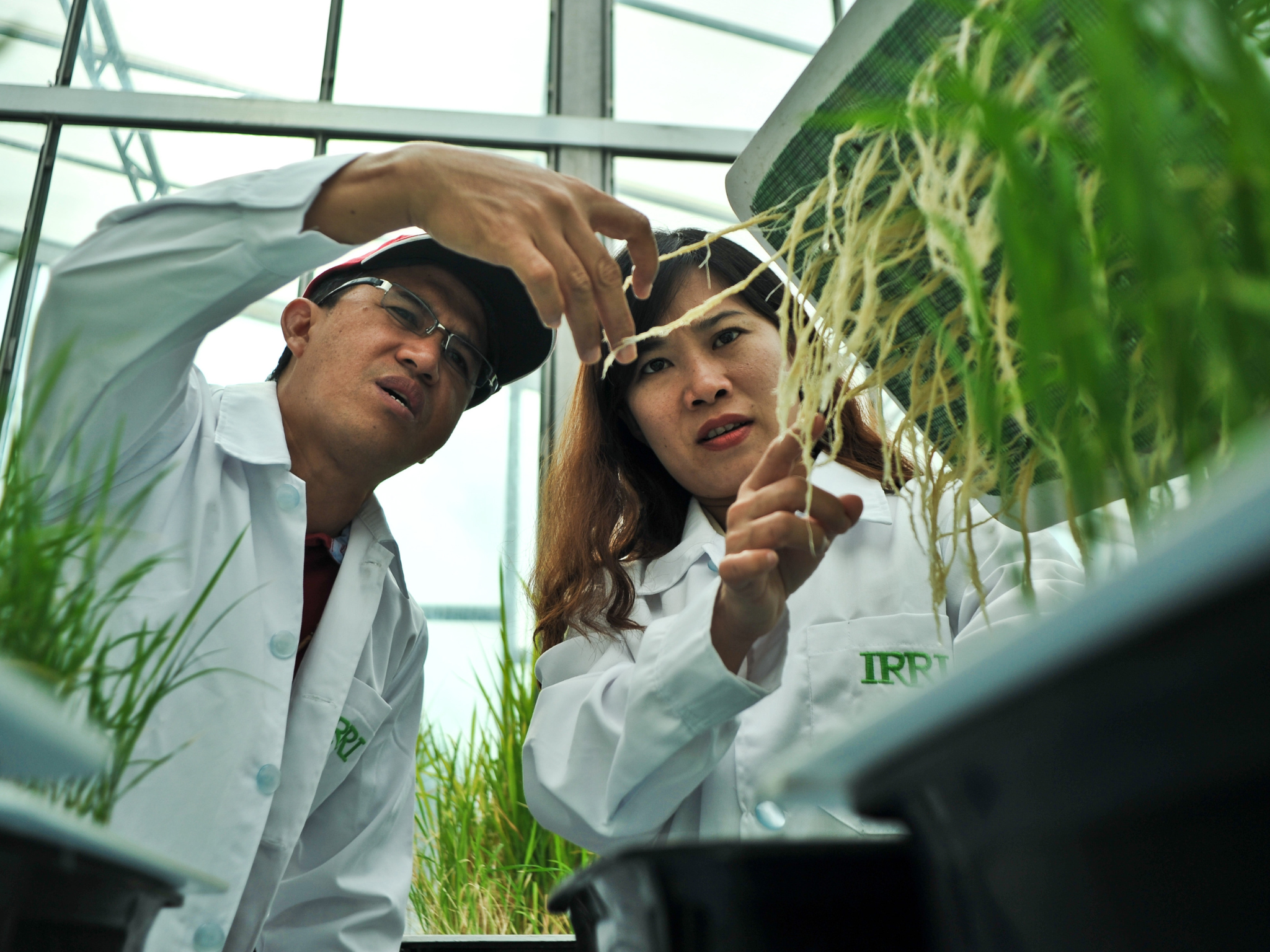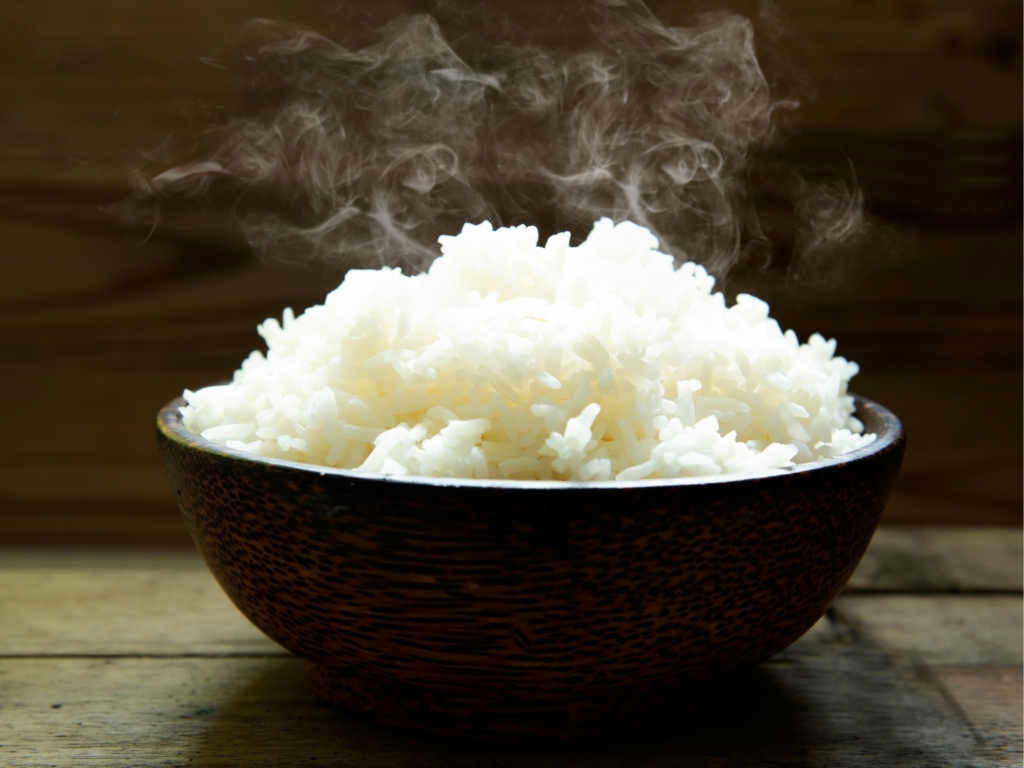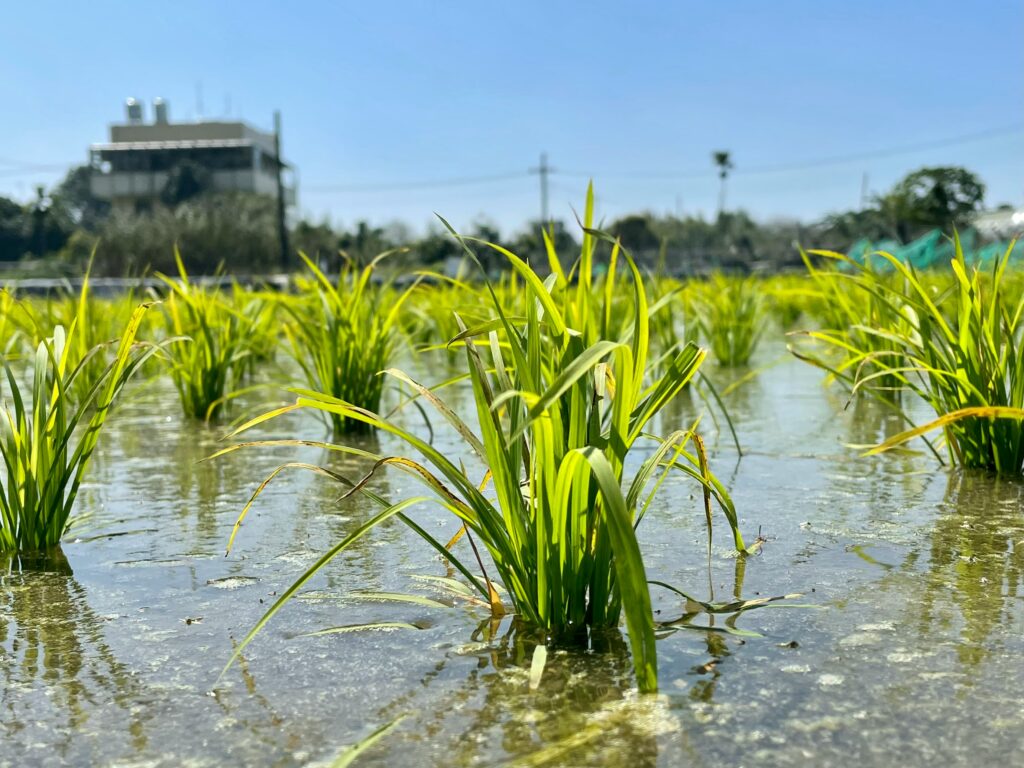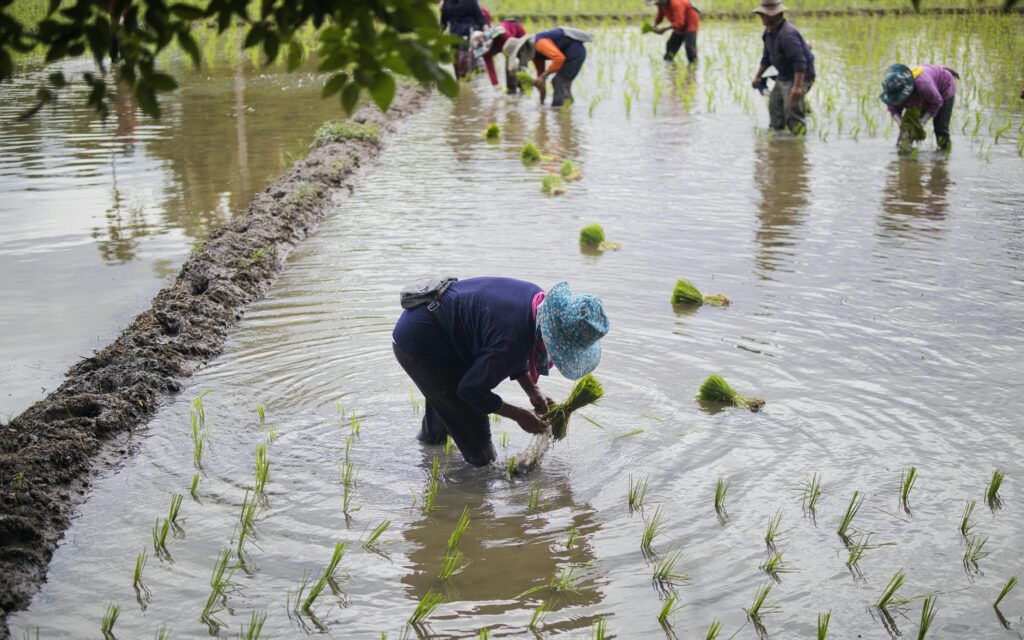
The Global Methane Hub has invested $30M in an accelerator programme to fast-track solutions to lower methane emissions from rice production.
Half the world depends on rice for most of its food requirements, and 95% of the grain is produced and consumed in developing countries. In fact, over three-quarters of the crop globally directly serves as food for humans, significantly higher than wheat (66%) and maize (12%).
Rice has an oversized impact on the climate. Rice paddies account for 9% of human-caused methane emissions and around 1.5% of global greenhouse gas emissions, and they consume 40% of the world’s irrigation water.
The flooded conditions in paddies create an oxygen-free environment where soil microbes flourish, consuming organic matter and producing methane as a byproduct, most of which is released into the atmosphere by the rice plants.
Climate change is wreaking havoc on the rice industry too. Rising temperatures could shrink rice yields by 40% by the end of the century, and are already raising arsenic levels in the crop. In China, extreme rainfall has reduced rice yields over the last 20 years. And in Vietnam, nearly 250,000 acres of land in the Mekong Delta – its rice bowl – is being taken out of production, partly due to climate change.
This is why the Global Methane Hub, a philanthropic organisation that invests and mobilises financing to reduce methane emissions, has committed $30M to a new Rice Methane Innovation Accelerator.
The research scheme, which will be supported by The Rockefeller Foundation and convene at its Bellagio Center next year, aims to accelerate innovations that slash methane emissions from rice cultivation, without compromising yields and profitability.
“Methane emissions from rice cultivation need to be addressed alongside all other significant methane sources,” Hayden Montgomery, director of the Global Methane Hub’s agriculture programme, told Green Queen.
“By deploying and scaling technologies, such as high-yielding rice varieties with shorter growth durations and minimal water requirements, we can achieve substantial emission reductions. These technologies not only help reduce rice methane emissions while meeting growing demand, but also build the resilience of smallholder rice farmers by lowering water pumping costs and increasing yields.”
Global Methane Hub spotlights four research areas for rice

One of the most popular strategies to save water and reduce methane output from rice production is alternative wetting and drying (AWD). This involves farmers going through several wet and dry cycles, rather than keeping the paddy flooded the whole time.
However, the effectiveness of such systems is heavily dependent on local infrastructure, agronomic conditions, and the farmer’s capacity to implement them. And according to the Global Methane Hub, these strategies haven’t delivered the necessary reductions at scale to “significantly bend the curve of rice methane emissions”.
Through the accelerator, whose strategy will be released in early 2026, it will develop a roadmap for improving the readiness and real-world performance of various solutions identified under the four key research areas for rice systems: plant genetics and physiology, soil microbiome, agronomy, and emissions measurement.
“The accelerator is a pooled, globally coordinated research effort that will be guided by a comprehensive strategy, which is currently under development. The allocation of funds will be determined on the basis of recommendations of a scientific committee, and decisions taken by the funders,” said Montgomery.
“Our intention will be to balance the deployment of funding across the breadth of the scope of research, which includes agronomy, plant research, soil microbiome and emissions measurement, and between early and late stage research, always with a view to bringing about a step change in the speed of progress and ensuring relevance to the largest rice growing regions, including Asia.”
Rice methane accelerator seeks $100M in public and private sector investment

To date, the Global Methane Hub has raised over $500M in pooled funds from more than 20 of the largest climate philanthropies to speed up methane mitigation efforts globally.
The new accelerator is looking to secure at least $100M more in philanthropic, public and private sector funding. “We are engaging with philanthropy, governments and the private sector to attract additional investment into the Rice Methane Innovation Accelerator. We have secured initial commitments from philanthropy but we are engaging in productive discussions with many more,” Montgomery said.
“Awareness of the importance of addressing methane is rising, and many governments and companies are already investing in research to address rice methane. The accelerator offers a way to consolidate this and overcome the fragmentation that has previously held back progress.
“Companies from across rice value chains, such as retailers, processors, consumer packaged goods companies and traders, are also starting to get better organised in order to address their scope 3 methane. Just a week ago, the World Business Council for Sustainable Development launched a new guide to support companies to take action. We expect this to help drive further investment.”
This is the organisation’s second flagship agricultural research initiative, following the Enteric Fermentation Accelerator, which focuses on lowering emissions from livestock (the leading source of anthropogenic methane emissions).
“With the Enteric Fermentation Accelerator, we have been successful in raising awareness of the need to address emissions of enteric methane. We have attracted significant additional resources from across philanthropy, public and private sectors towards the implementation of the strategy we published, and we have been able to deploy resources into the highest priority research areas much more quickly than typically occurs,” noted Montgomery.
“Because we deploy resources through direct collaboration with researchers, we have been able to assemble consortia of specialists from across many disciplines, who wouldn’t have necessarily worked together otherwise. This has led to very strong research teams being built with the requisite capability to deliver. We hope to replicate this kind of success with the Rice Methane Innovation Accelerator.
Bill Gates’s outlook ‘very much aligned’ with Global Methane Hub’s mission

As greenhouse gases go, methane is particularly dangerous for short-term warming. “Methane is a short-lived, highly potent greenhouse gas, with 86 times the atmospheric warming potential of CO2 over a 20-year period,” Montgomery pointed out. “Therefore, improving rice cultivation systems presents a significant opportunity to quickly reduce warming.”
According to the Global Methane Hub, without low-emission strategies that are adaptable across diverse contexts and able to balance productivity, water use efficiency and sustainability with improved farmer resilience, rice methane emissions could increase by 7% by 2030.
This has led several startups to innovate with sustainable rice production. Indian-American firm MittiLabs and France’s CarbonFarm both use AI and satellite tech for carbon credits (though the efficacy of the voluntary carbon market has been called into question multiple times)
In Singapore, Rize buys seeds, fertilisers, and other inputs in bulk and sells them to farmers who implement alternate wetting and drying. This practice, which could lead to a 30-70% reduction in methane emissions, is promoted by fellow Singaporean startup AgriG8 too, whose gamified digital platform helps rice farmers lower emissions.
In his controversial memo last week, Microsoft co-founder and billionaire philanthropist Bill Gates namechecked rice’s methane impact. However, when it comes to agriculture, he suggested the focus should not be on emissions reduction; rather, it should be on increasing yields, developing climate-resilient crop varieties, and using AI to forecast weather and change cultivation plans.
“Bill Gates asserts that we need to back breakthroughs that will help the world reach zero emissions, that we can’t cut funding for health and development to do it, and we need to improve agriculture in poor countries,” said Montgomery.
“This assertion is very much aligned with the mission of the Rice Methane Innovation Accelerator to crowd-in new public, private and philanthropic investment to drive breakthroughs, rather than relying on reallocations of other funding, and to support low methane rice production that also supports resilient livelihoods and food security, in particular in poor countries,” he added.
“The accelerator will be dedicated to developing innovations that expand upon and add to the already available options for reducing rice emissions, ensuring they are locally relevant to smallholder rice farmers globally. Good agricultural practice is good for farmers, yields and also methane emissions.”
The post Global Methane Hub Launches $30M Project to Cut Methane Emissions from Rice Farming appeared first on Green Queen.
This post was originally published on Green Queen.